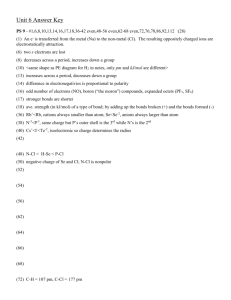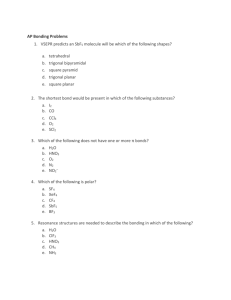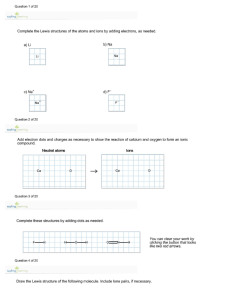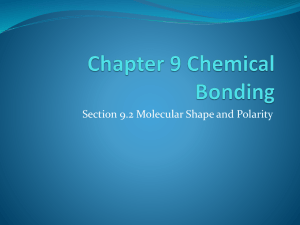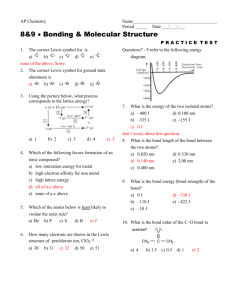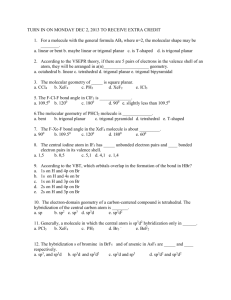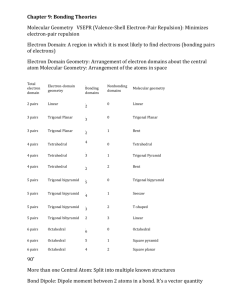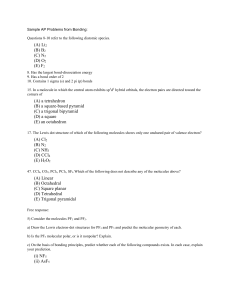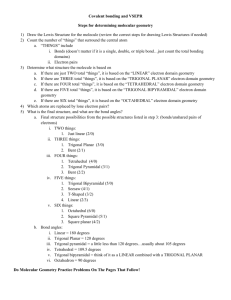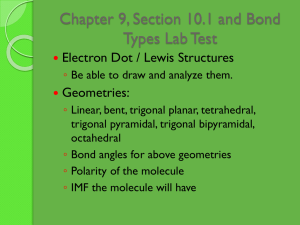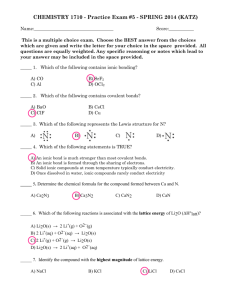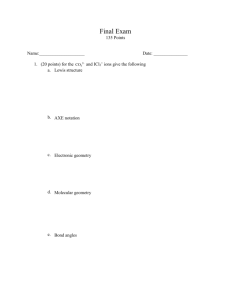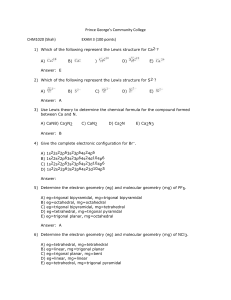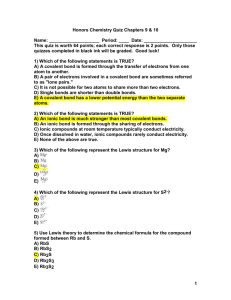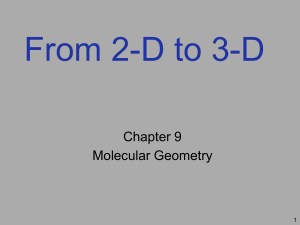Chapter 12 & 13 * Chemical Bonding
advertisement
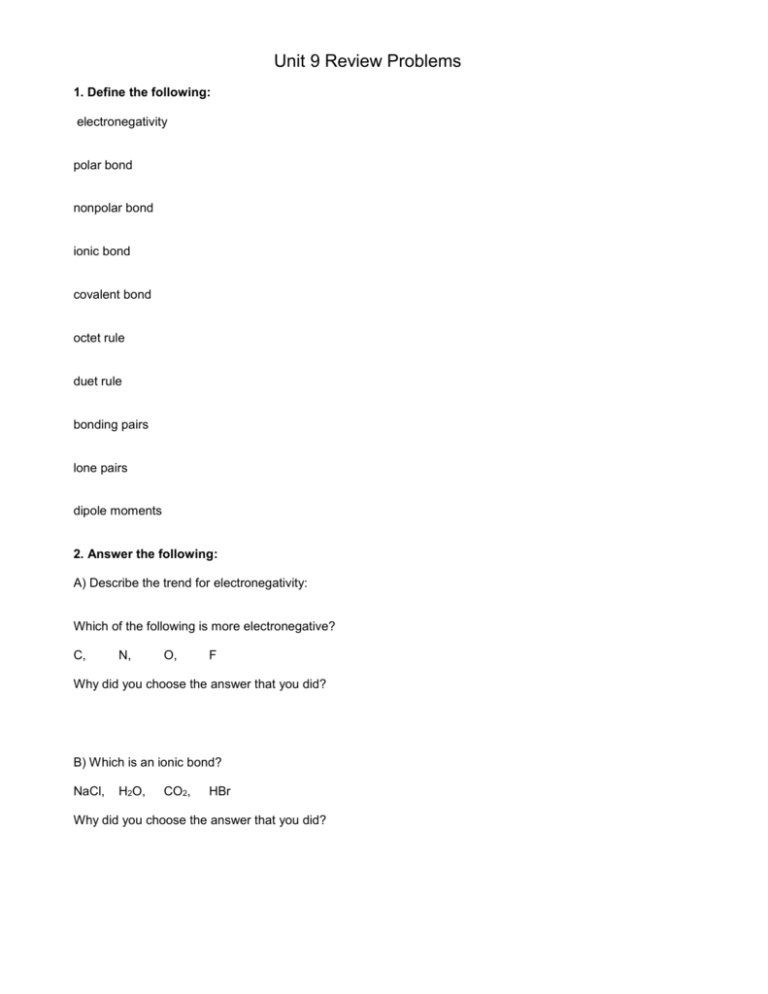
Unit 9 Review Problems 1. Define the following: electronegativity polar bond nonpolar bond ionic bond covalent bond octet rule duet rule bonding pairs lone pairs dipole moments 2. Answer the following: A) Describe the trend for electronegativity: Which of the following is more electronegative? C, N, O, F Why did you choose the answer that you did? B) Which is an ionic bond? NaCl, H2O, CO2, HBr Why did you choose the answer that you did? C) Which is a covalent bond? KBr, MgO, AlN, H2 Why did you choose the answer that you did? D) Which of the following is more polar? C-Cl, O-F, S-Cl Why did you choose the answer that you did? E) Which of the following is a polar covalent molecule? CCl4, NaCl, CH3Cl, CH4 Why did you choose the answer that you did? F) Again, which of the following is a polar covalent molecule? H2, Cl2, HCl, CO2 Why did you choose the answer that you did? G) Which of the following atoms has 5 valence electrons? F, V, N, Ne Why did you choose the answer that you did? H) What is the difference between a duet and an octet? Give an example of each: Duet___________________ Octet ___________________ Why do certain atoms want a duet and not an octet? I) Which of the following atoms wants to gain 2 electrons in order to form a stable octet? C, He, Be, O Why did you choose the answer that you did? J) Which one of the following atoms wants to lose 1 electrons in order to form a stable octet? F, Ar, Li, Al Why did you choose the answer that you did? K) Which is the largest ion? O2+, O, O2- Why did you choose the answer that you did? L) Which of the following have polar bonds? (You can choose more than one) Cl2, F2, HBr, O2, CO2, NH3, N2 Bent, Trigonal Pyramid Why did you choose the answer that you did? M) What is the predicted shape of water (H2O)? Linear, Trigonal Planar, Tetrahedral, Draw the Lewis structure, 3-D shape and identify the bond angle for the above molecule. What is the predicted shape of carbon dioxide (CO2)? Linear, Trigonal Planar, Tetrahedral, Bent, Trigonal Pyramid Draw the Lewis structure, 3-D shape and identify the bond angle for the above molecule. What is the predicted shape of ammonia (NH3)? Linear, Trigonal Planar, Tetrahedral, Bent, Trigonal Pyramid Draw the Lewis structure, 3-D shape and identify the bond angle for the above molecule. What is the predicted shape of methane (CH4)? Linear, Trigonal Planar, Tetrahedral, Bent, Trigonal Pyramid Draw the Lewis structure, 3-D shape and identify the bond angle for the above molecule. What is the predicted shape of ozone (O3)? Linear, Trigonal Planar, Tetrahedral, Bent, Trigonal Pyramid Draw the Lewis structure, 3-D shape and identify the bond angle for the above molecule. What is the predicted shape of fluorine (F2)? Linear, Trigonal Planar, Tetrahedral, Bent, Trigonal Pyramid Draw the Lewis structure, 3-D shape and identify the bond angle for the above molecule. What are the predicted shapes (Hint: resonance structures) of nitrate (NO3-)? Linear, Trigonal Planar, Tetrahedral, Bent, Trigonal Pyramid Draw the Lewis structure, 3-D shape and identify the bond angle for the above molecule.
